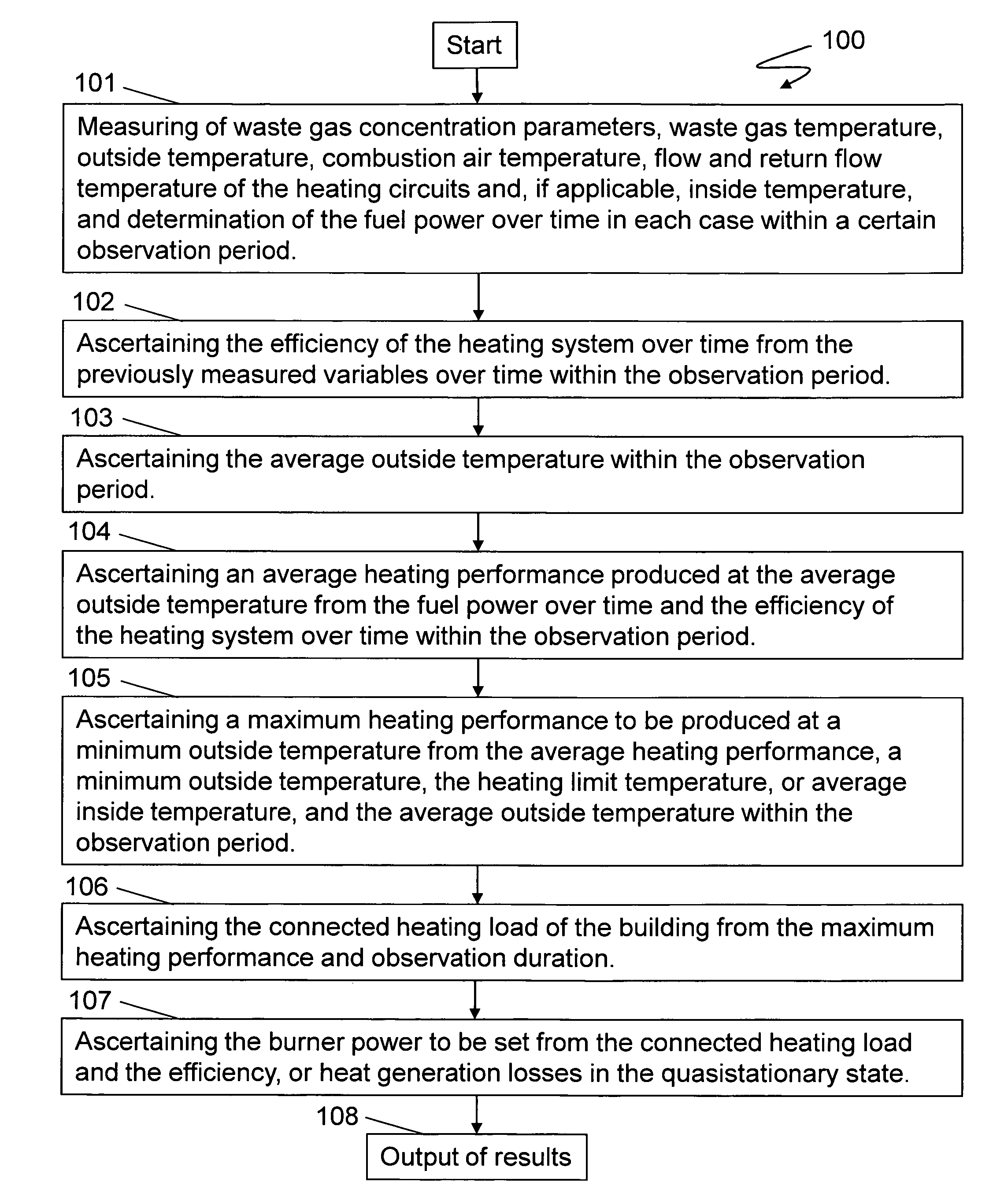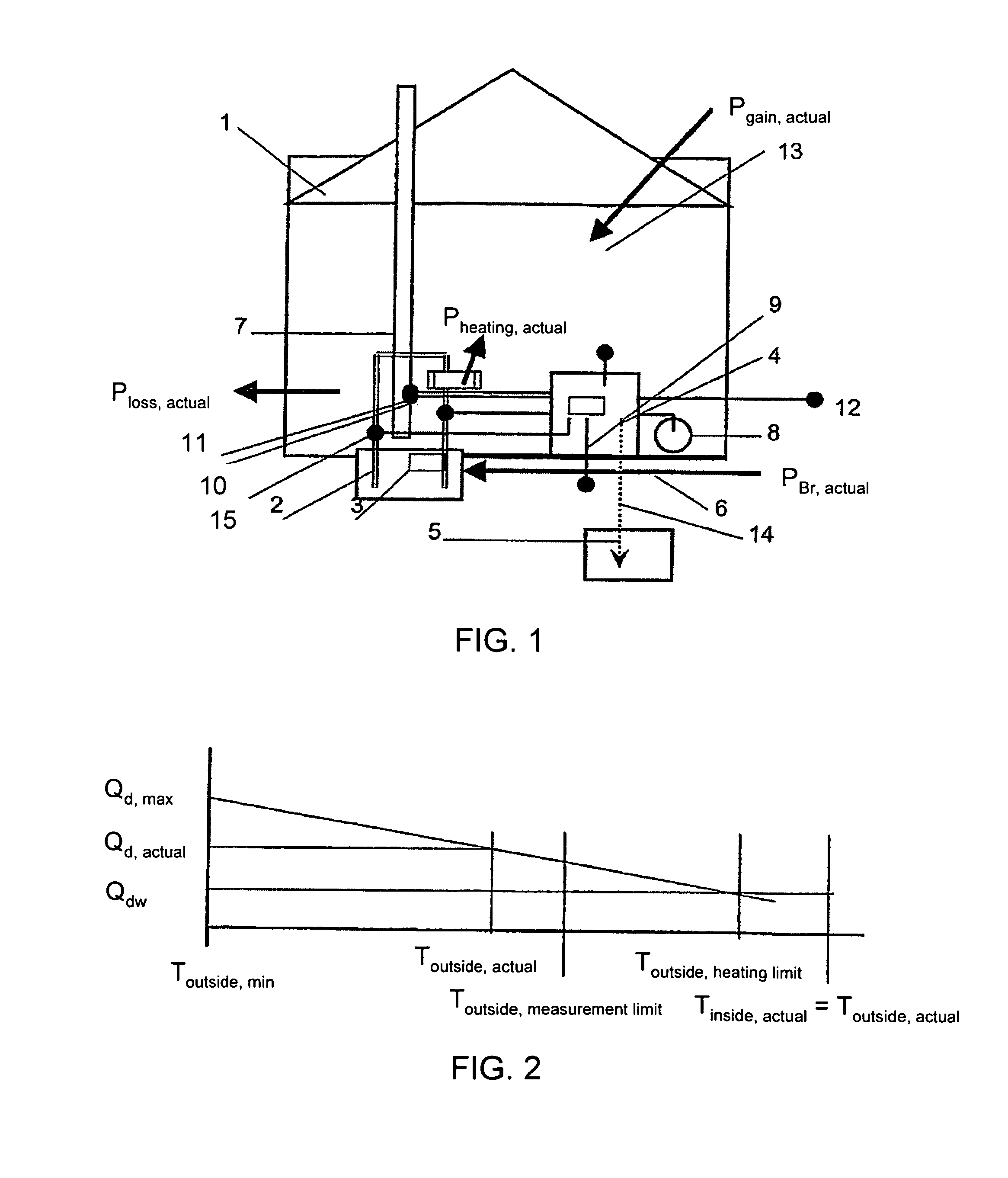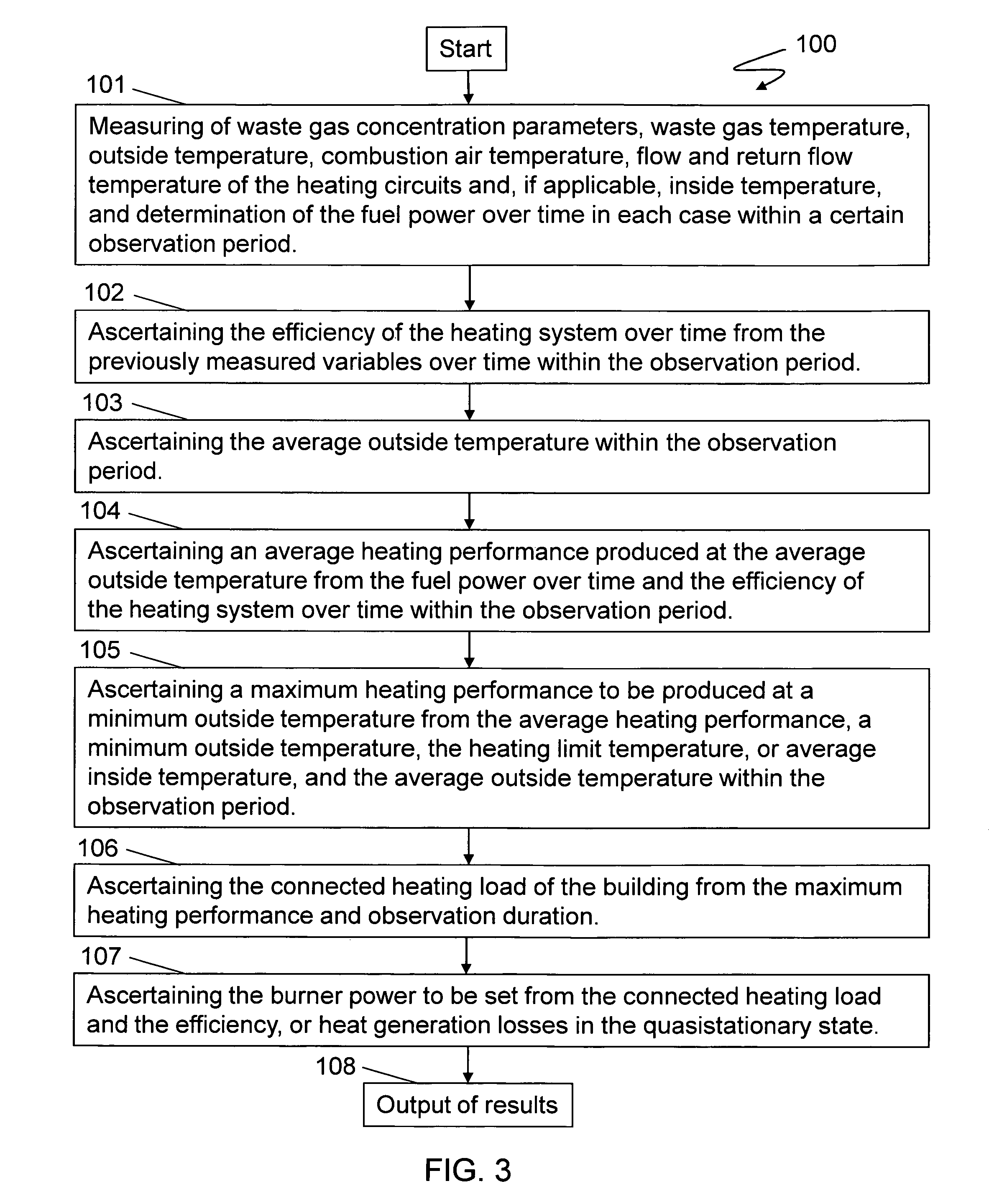Determination of the connected heating load of a building
- Summary
- Abstract
- Description
- Claims
- Application Information
AI Technical Summary
Benefits of technology
Problems solved by technology
Method used
Image
Examples
Embodiment Construction
[0065]Referring now to the figures of the drawing, the figures comprise a part of this specification and illustrate exemplary embodiments of the described system. It is to be understood that in some instances various aspects of the system may be shown schematically or may be exaggerated or altered to facilitate an understanding of the system.
[0066]In the case of the system according to FIG. 1, a heating system 2 including a boiler 3 (having a burner which is not illustrated in greater detail) is accommodated in a building 1 for the purpose of heating building 1, the heating system being fired by fossil fuel 6 such as oil or gas, or by renewable fuels such as pellets. Fuel power PBr, actual contained in fuel 6 is converted to a useful power Pheating, actual, the heating system having an efficiency ηK, so that useful power Pheating, actual generated by the heating system is equal to the product of efficiency ηK and fuel power PBr, actual. In addition, power loss Ploss, actual is withd...
PUM
 Login to View More
Login to View More Abstract
Description
Claims
Application Information
 Login to View More
Login to View More - R&D
- Intellectual Property
- Life Sciences
- Materials
- Tech Scout
- Unparalleled Data Quality
- Higher Quality Content
- 60% Fewer Hallucinations
Browse by: Latest US Patents, China's latest patents, Technical Efficacy Thesaurus, Application Domain, Technology Topic, Popular Technical Reports.
© 2025 PatSnap. All rights reserved.Legal|Privacy policy|Modern Slavery Act Transparency Statement|Sitemap|About US| Contact US: help@patsnap.com



